
Audio Note (UK) Io I moving coil phonograph cartridge.
It was a pleasure writing about the Audio Note (UK) Io I MC phono cartridge, AN-S4 step-up transformer, AN-V silver interconnects, and AN-SPe silver loudspeaker cables for Positive Feedback ...
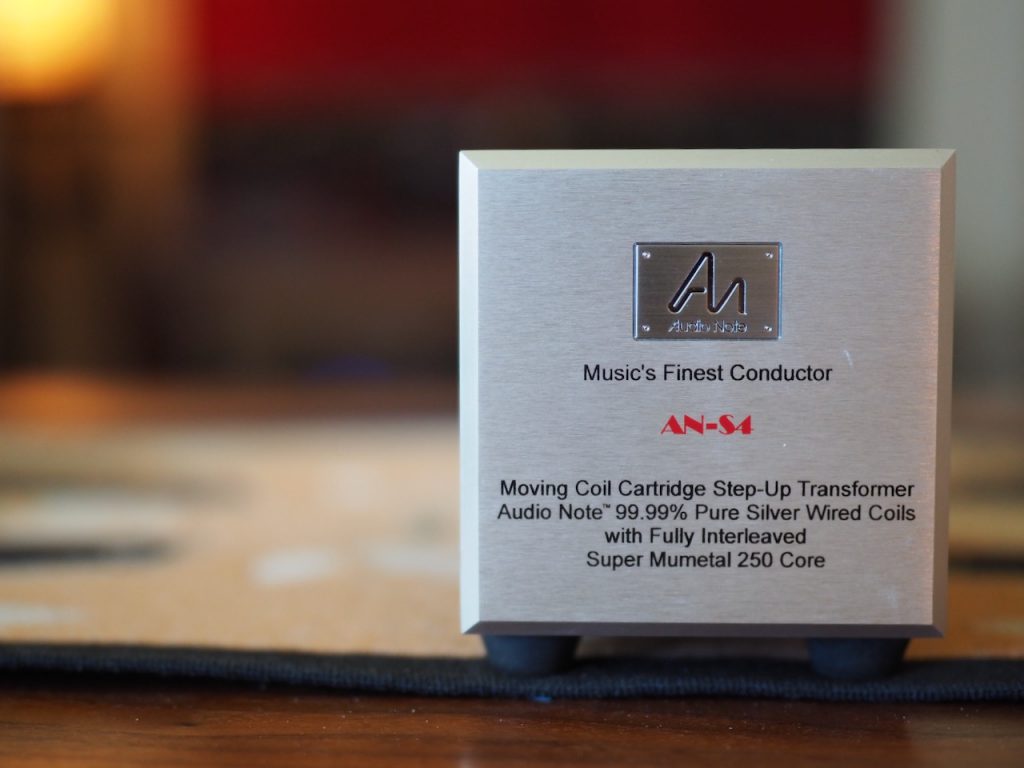
Audio Note (UK) AN-S4 step-up transformer (SUT).
... as well as sharing some of my long term impressions about the Audio Note (UK) Oto Phono SE Signature integrated amplifier and Audio Note (UK) CD 2.1x/II Red Book CD player.
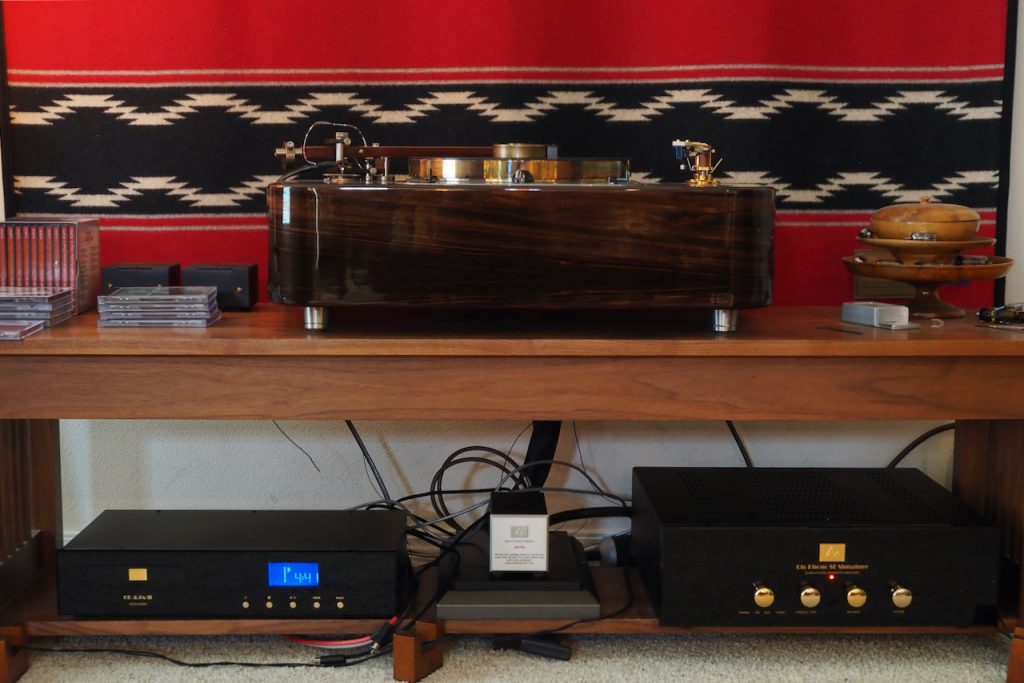
Left to right: Audio Note (UK) CD 2.1x/II Red Book CD player, Audio Note (UK) AN-S4 SUT, and Audio Note (UK) Oto Phono SE Signature integrated amplifier.
I also discussed my impressions of the Audio Note (UK) philosophy of the importance of complete system design synergy, and delved lightly into the Audio Note (UK) system of 'levels' that describes the additional refinement in performance of ascending up through "Level Zero" to "Level Six".
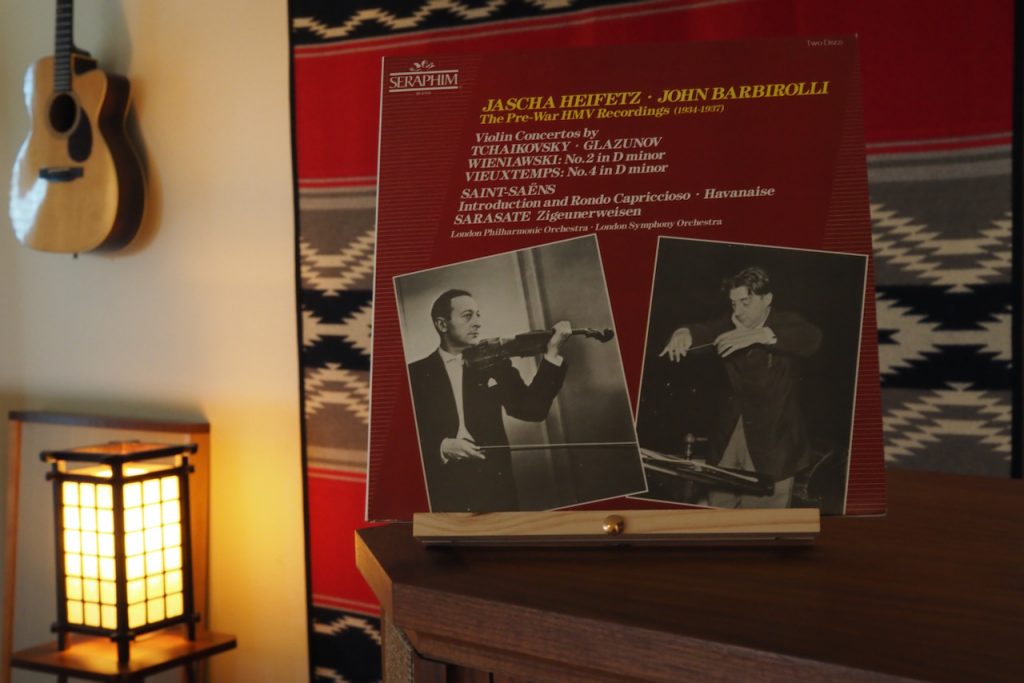
Heifetz-Barbirolli 'The Pre-War HMV Recordings of Saint-Saëns and Sarasate' - recorded 1935-1937 by EMI during the electric recording era.
I concluded by discussing how the Audio Note (UK) source components allowed me to broaden my listening adventures into new realms of music, and opened up a new level of listening enjoyment for me that spanned the acoustic (1877-1925), the electric (1925-1945), the magnetic (1945-1977), and the digital (1977-now) eras of our recorded music canon.
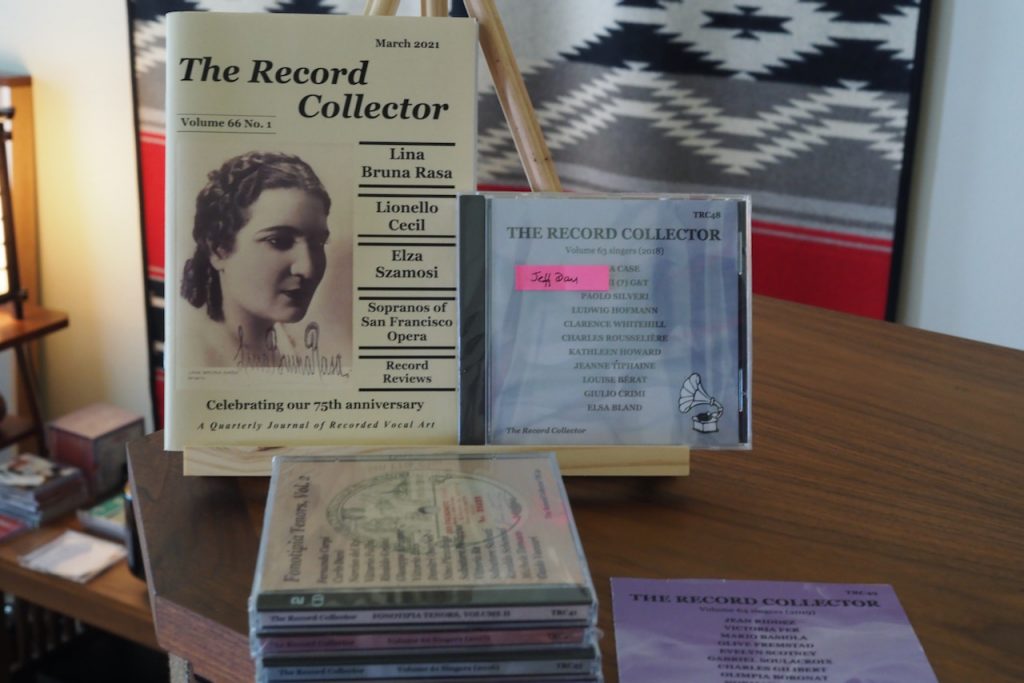
The Record Collector magazine and 78 transfers to CD.
You can read the whole story at Positive Feedback HERE.
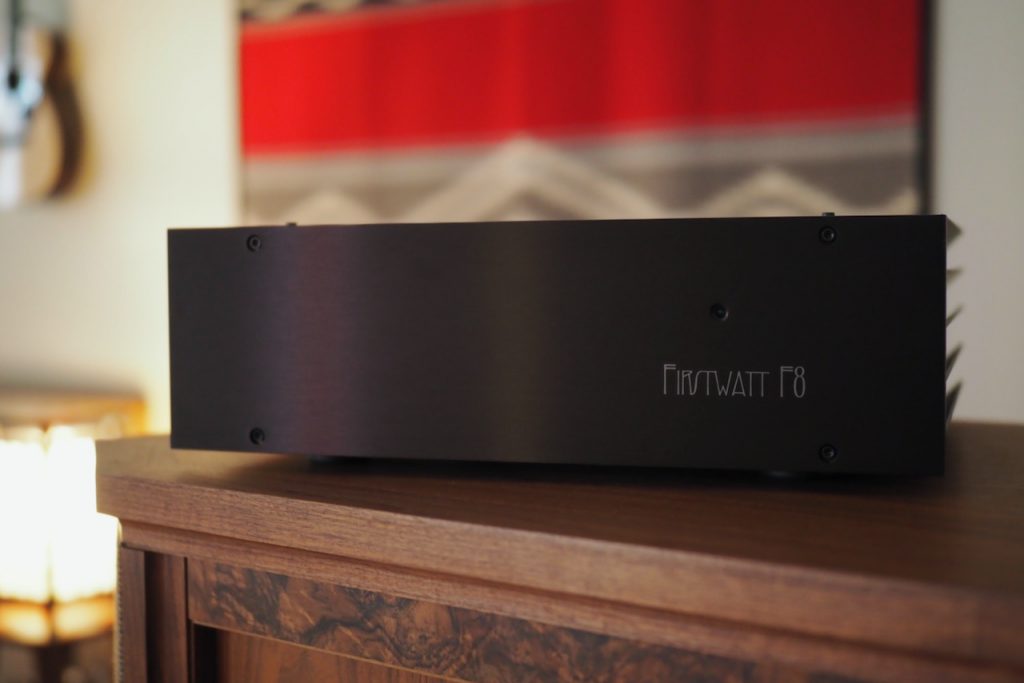
The new First Watt F8 stereo amplifier from Nelson Pass. $4000 USD.
Next up in my review queue is the First Watt F8 stereo amplifier from Nelson Pass.
My goal over the rest of this week is to get the Pass Labs XP-17 phono preamplifier, Pass Labs XP-12 line-level preamplifier, and First Watt F8 power amplifier installed back into my primary music listening system in preparation for writing its upcoming Positive Feedback article.
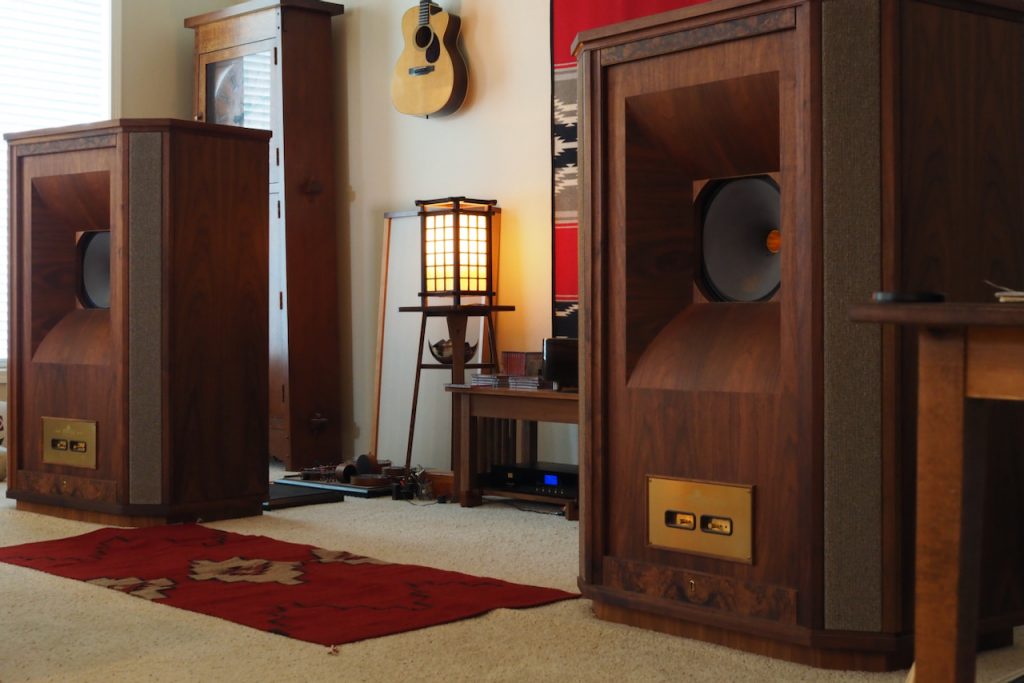
Tannoy Westminster Royal SE loudspeakers with Duelund CAST crossovers.
One thing you find out when writing about audio equipment, is that it takes a while to optimize a new set of components in an audio system, as well as for the components to settle down and gel together after a system change, even when they are already completely run-in, which these are.
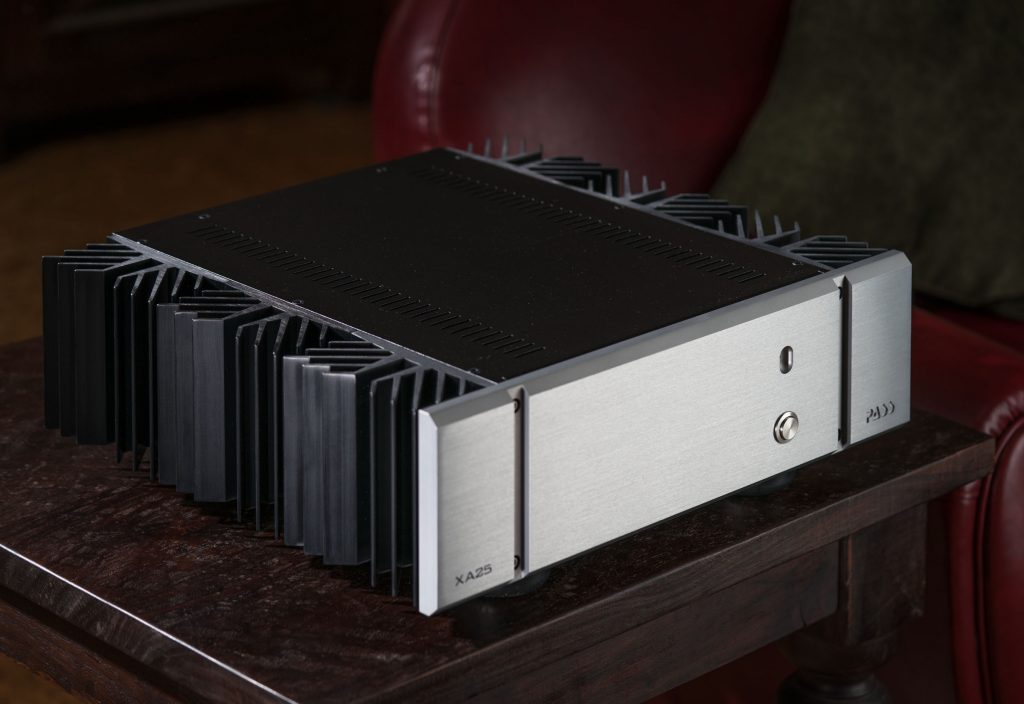
Pass Labs XA25 Class A stereo power amplifier.
For the article, I'll be offering my impressions about how the new First Watt F8 (25 watts per channel) compares to the Pass Labs XA25 power amplifier (25 watts per channel), and the First Watt SIT-3 (18 watts per channel).
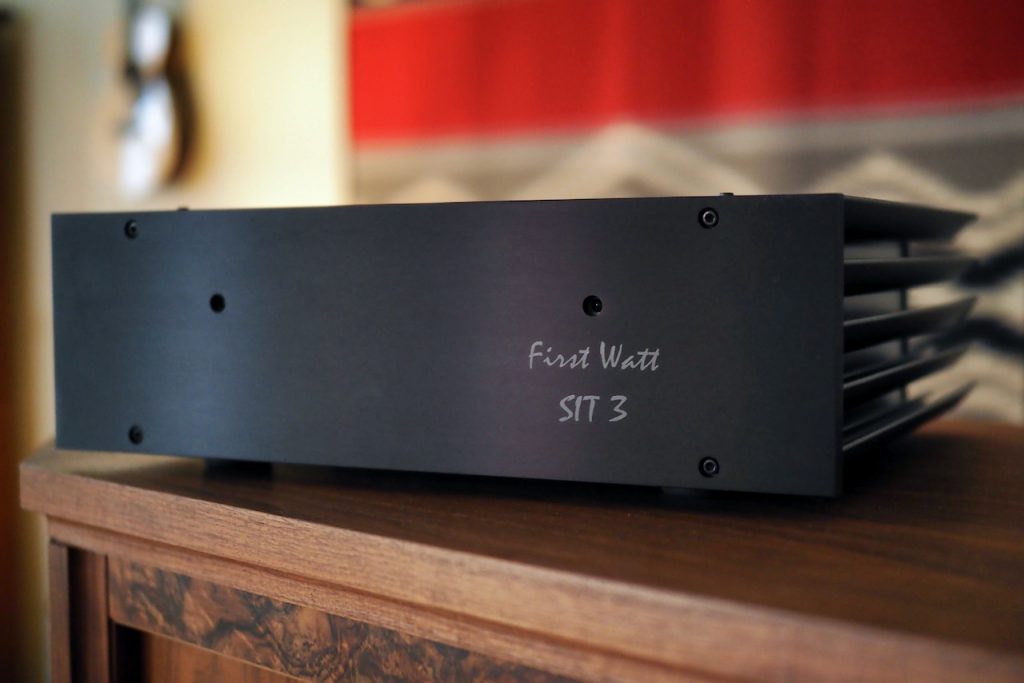
The First Watt SIT-3 stereo amplifier by Nelson Pass.
I've done quite a lot of listening to these amplifiers already, and I can tell you that they each have their own unique character, and they all are impressive performers, as you would expect when they come from the design inspiration of Nelson Pass (and Wayne Colburn for the XA25).
I can tell you that the day is long past where the merits of vacuum tube versus solid-state amplifiers are debated with the fervency of partisan theologians discussing which ancient texts to incorporate during canonization.
These solid-state designs from Nelson Pass and Wayne Colburn really do incorporate the musicality of fine vacuum tube equipment, along with the long-term reliability of maintenance-free solid-state designs, in a way that is sure to delight music lovers all over Planet Earth.
Case in point: My friend David Gitlen, a massively talented jazz guitarist, has heaped significant praise upon both the Triode Lab 45 EVO integrated single-ended-triode amplifier, and the combination of the Pass Labs XP-17 phono preamplifier, Pass Labs XP-12 line-level preamplifier, and the Pass Labs XA25 stereo amplifier during our listening sessions, in terms of both sound quality and musicality.
Audiophiles have their own perspectives on how single-ended-triode amplifiers designs compare to advanced solid-state designs like those of First Watt and Pass Labs. Those perspectives may be a bit outdated based on what I'm hearing from these two very different design approaches.
What will David think of the new First Watt F8's performance as a musician? Stay tuned to find out.
Both of these design approaches provide deep insights into the musical performances, the sound quality of recordings, and the differences between recording styles within and between the recording eras, that makes listening sessions both enjoyable and illuminating on many levels.
Personally, I have to pinch myself from time-to-time just to make sure I'm not dreaming, as it is such an enjoyable privilege to write about such superb performers for you.
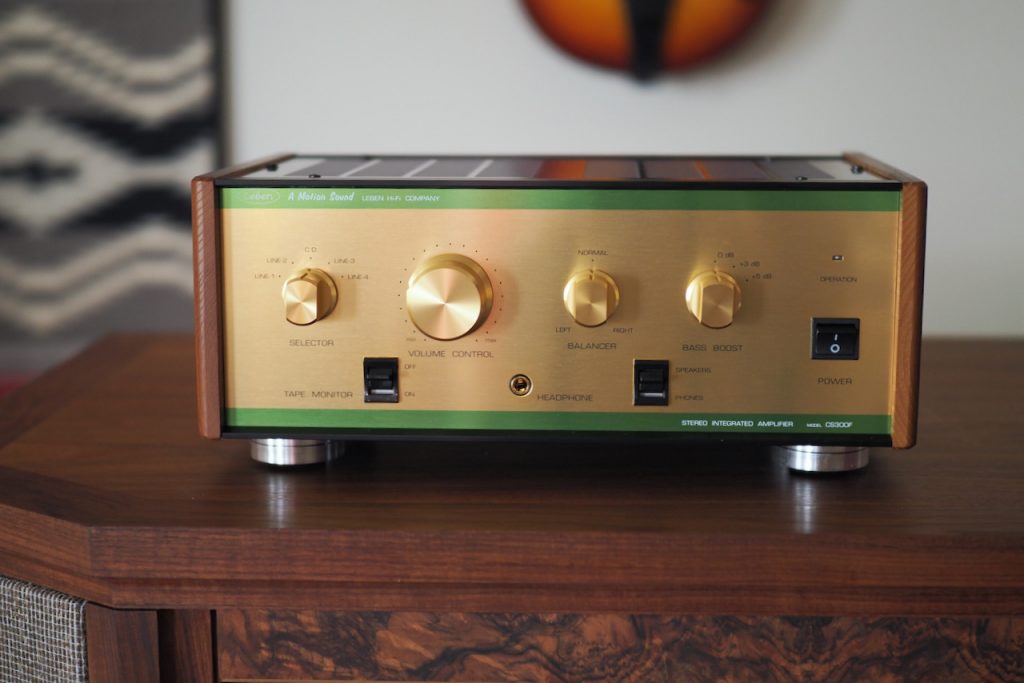
Leben CS-300F.
After the First Watt F8 article for Positive Feedback, next in the queue for review is the beautiful little Leben CS-300F with its exotic NOS GE JAN 6197 pentode power tubes and 17EW8 drivers for 15 watts per channel (more HERE).
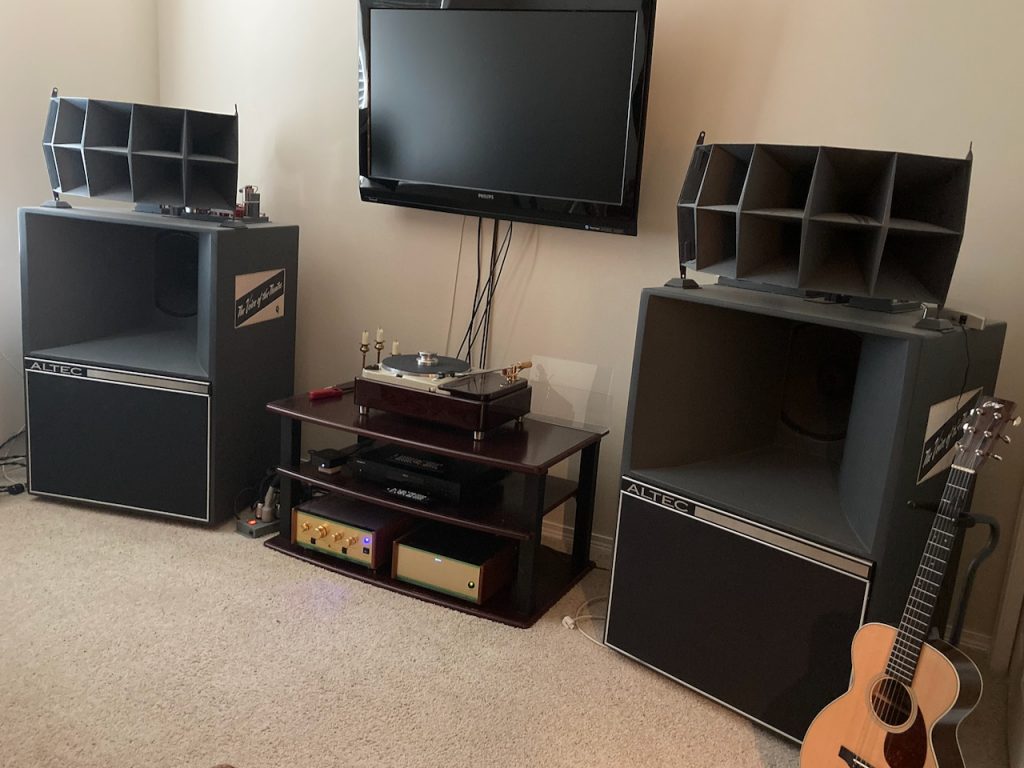
Leben CS-300F in my vintage Altec A5 Voice of the Theatre based AV system.
I've been listening to the Leben CS-300F in my vintage Altec A5 Voice of the Theatre based AV system to get it fully run-in.
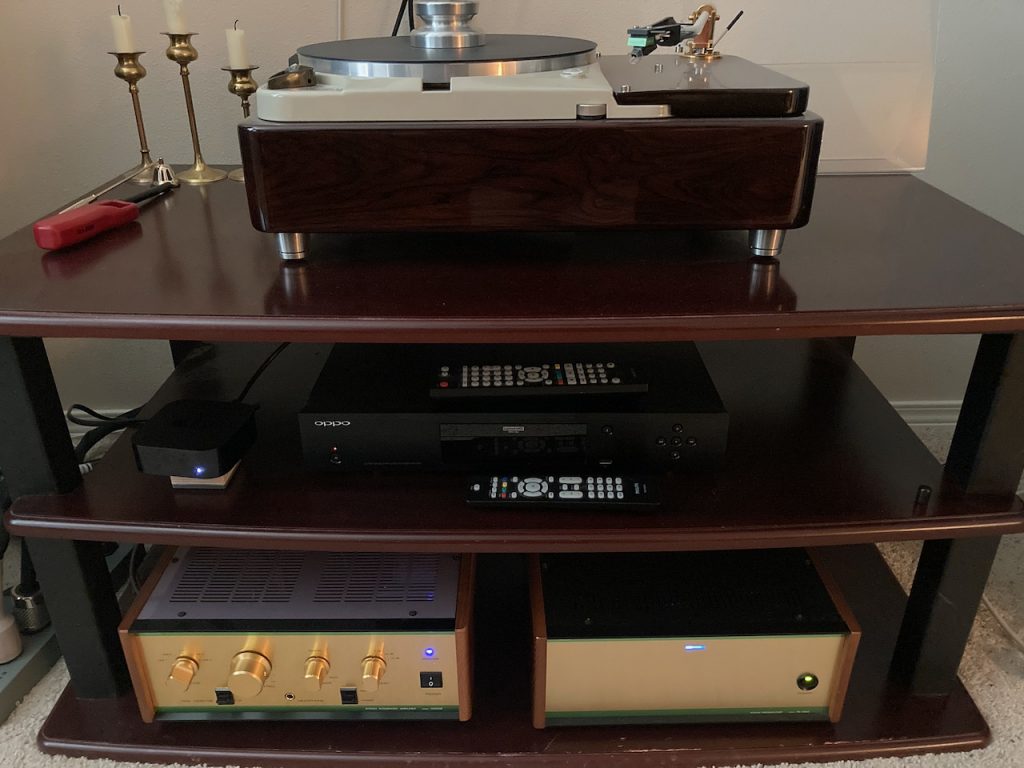
I don't think I've ever heard a component vary so widely in sound quality during its run-in period as did the Leben CS-300F.
The Leben CS-300F has gone from "hey that sounds pretty good" to "OMG! Is it broken?" (it wasn't) over the span of its run-in time, and has now settled down into a consistently nice place in terms of sound quality and musicality for listening to music and watching video.
I don't think I've ever encountered such a dramatic example of how important it is to make sure a component is fully run-in before drawing any conclusions about its performance.
I'll be writing up a Jeff's Place post about my initial listening impressions of the Leben CS-300F in the not too distant future, so stay tuned for that.
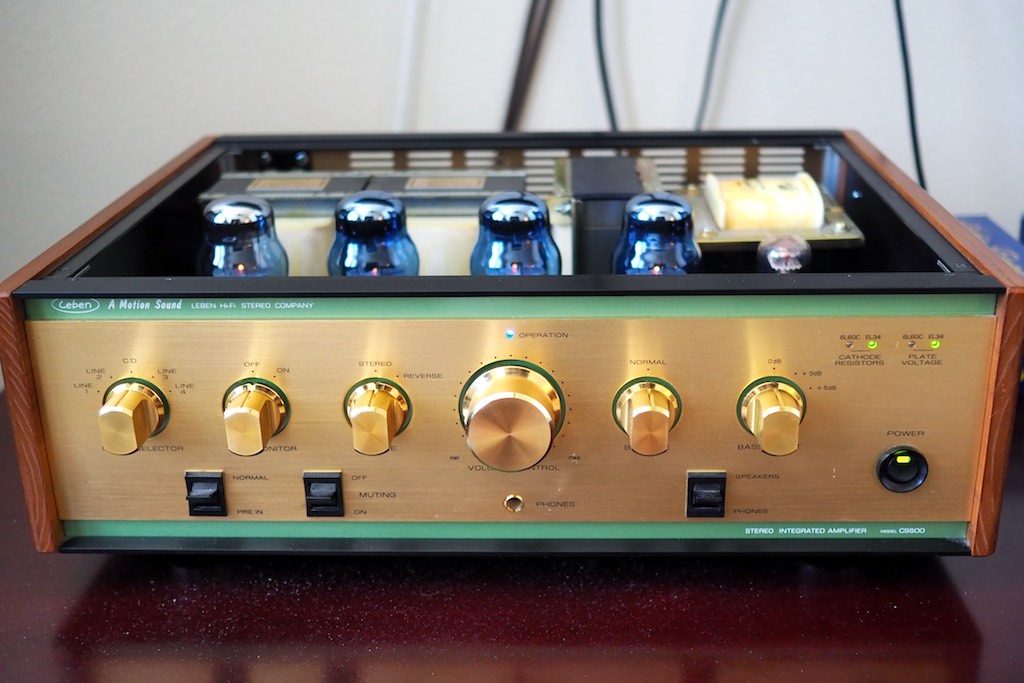
Leben CS-600 with Sophia Electric EL34-ST tubes.
In the article for Positive Feedback, I'll be comparing the Leben CS-300F to my Leben CS-600, so all you Leben lovers out there will know how they compare in terms of sound quality and musicality.

The Record Collector magazine and 78 transfers to CD.
Coming up in the very near future at Jeff's Place will be a survey of the different recording labels offering 78 transfers to CD for my 'The 78 Experience - Feeling the Music' series of posts.
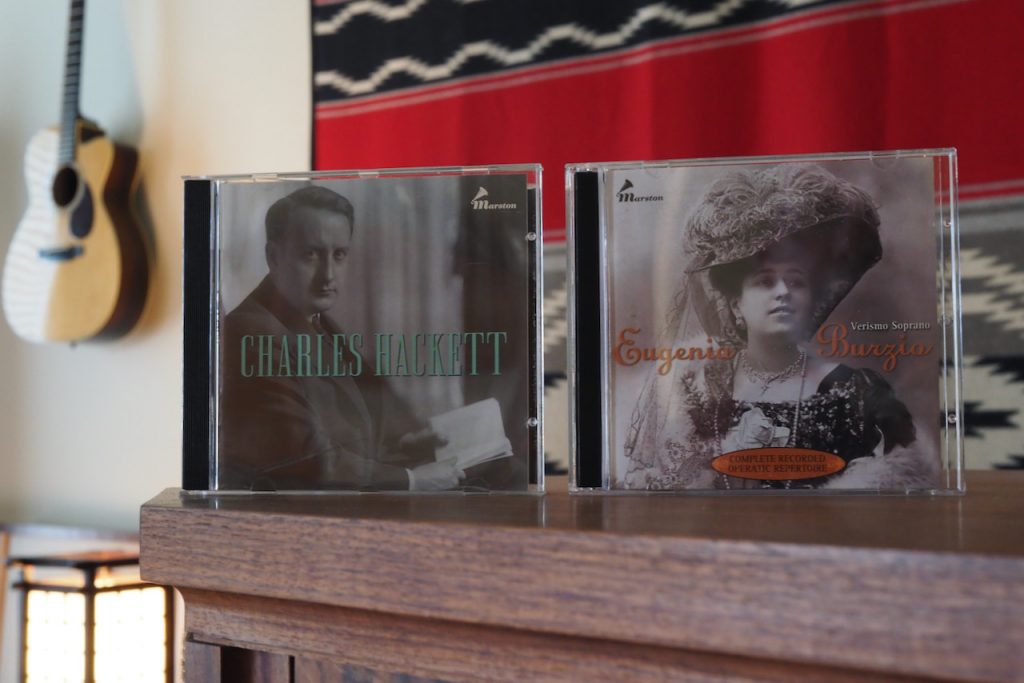
Marston Records 78 transfers to CD.
The Audio Note (UK) CD 2.1x/II Red Book CD player has been a revelation in listening to these ancient 78 records that have been transferred to CD, and honestly its been some of the most fun I've had listening to music.
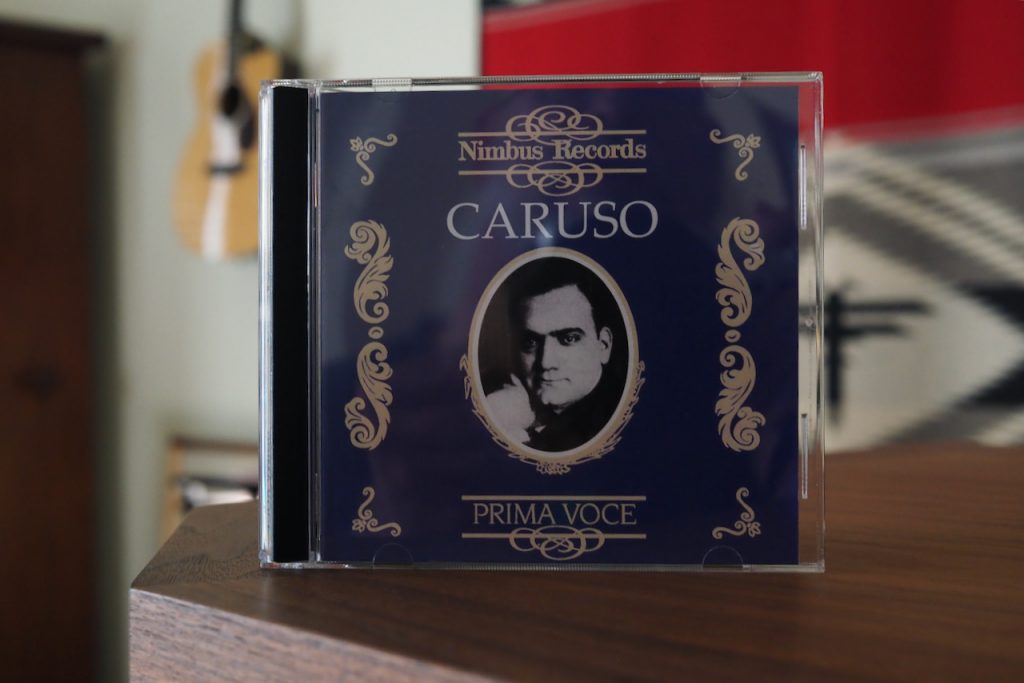
Caruso on the Nimbus Records 'Prima Voce' transfers from 78s.
I had a whole order of Nimbus Records 'Prima Voce' CDs I purchased go missing on their way from the UK to me, which has delayed writing this survey up for you.
Ironically, the order I placed for a set of Nimbus Records 'Hermes' jazz transfers - a day after I ordered the 'Prima Voce' transfers - arrived in a speedy nine days after I ordered them.
It's been over a month, and no Nimbus Records 'Prima Voce' CDs have arrived from my order, so Nimbus Records sent a replacement batch of the CDs I ordered in hopes that it will make it through the mail system gauntlet.
Hopefully they'll arrive soon enough for me to include in the survey.
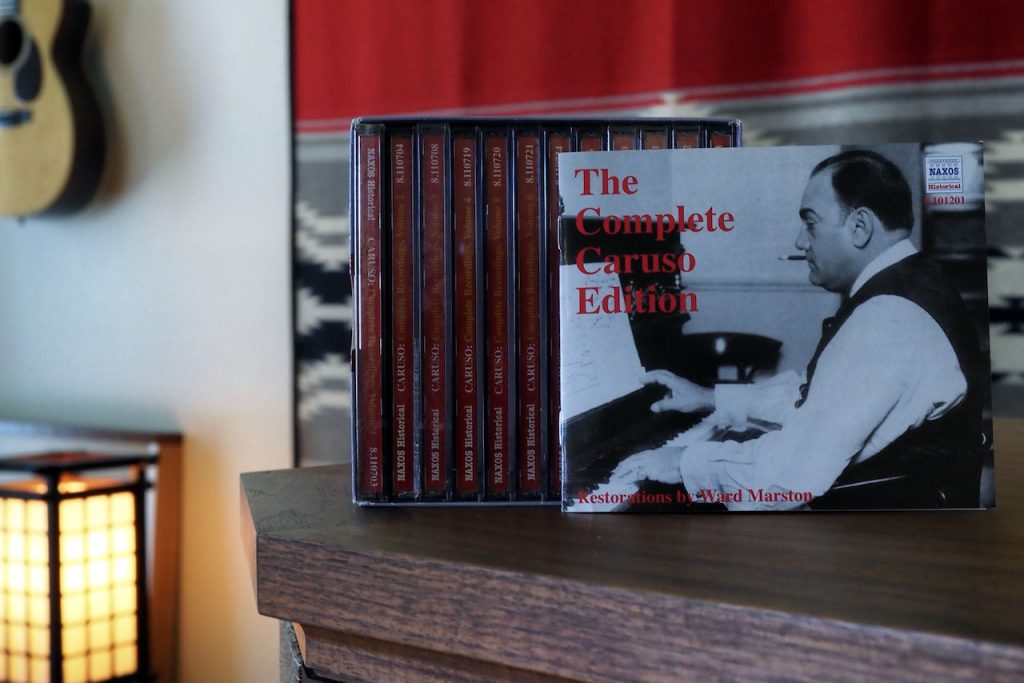
Naxos CD box set of the complete Caruso performances from the acoustic era of recording.
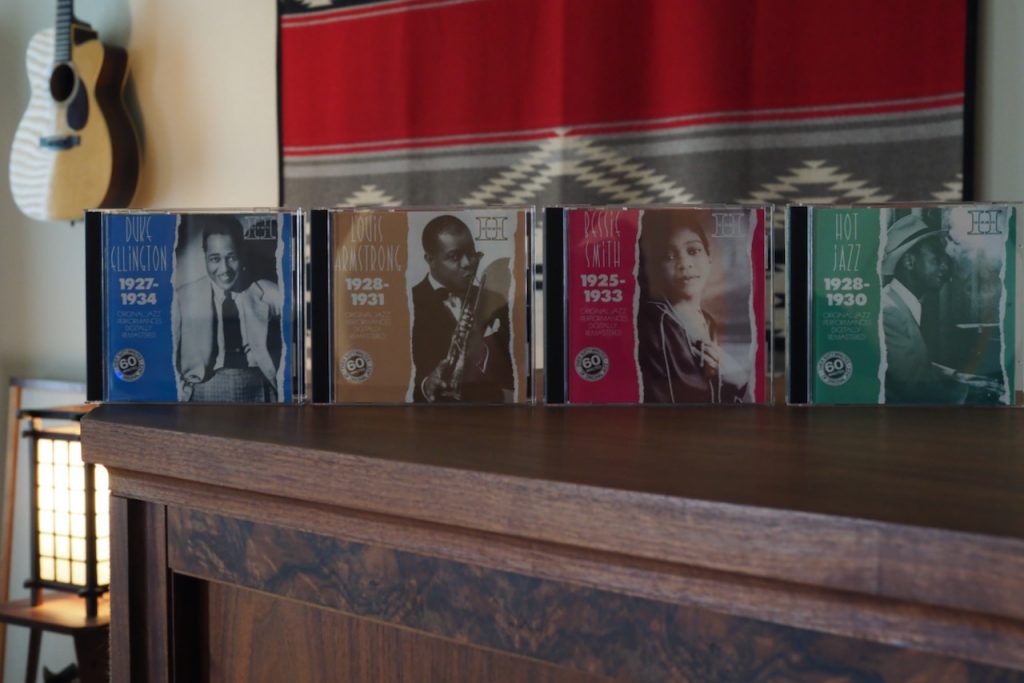
Nimbus Records 'Hermes' transfers from vinylite test pressings.

Peter Qvortrup's 78 transfers to CD-R using the AMR+ method.

Mezzo-soprano Sophia Preobrazhenskaya (1904-1966). Issaya Braudo, piano and organ. Leningrad Philharmonic orchestra, conductor Gemal Dalgat.

Alfred Cortot - Victor Recordings of 1919-1926.
All of these CDs I've listened to have been exceptional musical performances, and I'll be comparing my take on their recording quality, the quality of the transfers to CD, and the various stylistic approaches utilized for transferring these great musical performances to digital.
Ok, that's it for now. Time to get busy practicing my guitar!
As always, thanks for stopping by, and may the tone be with you!



























